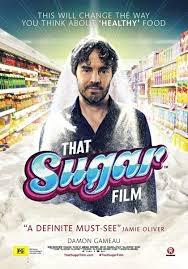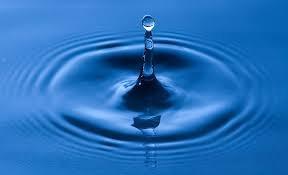

Tell It
POK FU LAM PREPARATORY SCHOOL, DECEMBER 2015
The Healthy Living Edition
Master of Disguise!
By Eesha Malhotra and Saskia Nacard
Why is sugar the villain?
What is hiding inside the box?
Have you ever checked the little nutrition panel on the side of your favourite cereal?
Imagine that you are eating breakfast and you're having a big bowl of cereal, juice and yogurt. You might think that you are starting your day off perfectly. Well think again! Your cereal or yogurt and juice contain a vast amount of sugar - hidden sugar. If you looked at the ingredients of what many people might think is a ‘healthy’ breakfast, you would be astonished. You can’t just rely on what is on the front of the packet, because that can be deceptive. Make sure you always have a close look at the ingredients and the nutrition panel.
Chances are there is more sugar in your cereal than you ever imagined. It may taste great, but did you know that the sugar that makes it taste so delicious is actually really bad for you? We met Tanja GuigonRech, a nutritionist based in Hong Kong, to understand how sugar is made. She explained, “It takes as much as eight sugar canes to make one sugar cube. If you were to eat a raw sugar cane fresh off the field, you couldn’t eat more than half. That’s why refined sugar is so bad for you - it is heavily concentrated.”
So what can happen to your body if you consume too much sugar? Over time, you may develop a serious illness known as diabetes. If you get diabetes, your body becomes unable to control the amount of sugar in your blood. As a result, sufferers have to inject insulin every morning to help balance their sugar levels.
Furthermore, eating sugar every day can lead to excess body fat, which is very unhealthy. Too much sugar can also affect your teeth, liver and heart. If you eat too much sugar over a long period of time, by the time you're an adult you could develop heart disease,


which can lead to a premature death. Sugar has a huge affect on you over time!
The World Health Organisation recently released a report that said that the average recommendation for children is about 25 grams of sugar per day. That is the same as 6 teaspoons of sugar. The chances are that a portion of your favourite cereal already has this amount of sugar in it. In reality, some kids around the world are having as much as 42 teaspoons of sugar a day!
Many people don’t realise that sugar is harmful. The BBC’s iwonder website states: “When we consume free sugars, they are quickly absorbed by our bloodstream and we experience pleasure and an energy boost. Our blood sugar levels spike and then drop. This is sometimes referred to as a ‘sugar crash’. These ‘sugar crashes’ make us crave sugar and the cycle of cravings and crashes continues.”
So what is the secret to good nutrition? “There is no secret, it’s all about balance,” explained Ms. GuigonRech. Easy improvements you can make include switching from high-sugar cereals to lower-sugar ones such as Rice Krispies. Make your own fresh, squeezed juice instead of drinking processed juice from cartonsand don’t drink too much juice. Eat more fruit, as the fibre it contains keeps you full. You can also choose healthy alternatives to fizzy drinks such as sparkling or still water. Most of all, read the nutrition label! Hopefully, that will lead you to make changes in your diet and become a healthier person.

Behind the Label
by Kathryn Paul
You may think that out there in the world of food, it is obvious which foods are good for you and which foods are not. But this is not always the case!
Some foods that you may think are ok are actually not very healthy for you at all. For example, sugar-free candies and other sugar-free foods and drinks can actually be worse for you than the normal versions that just contain sugar. The reason for this is because when they are made, in order to make the sugar-free food still taste nice and sweet, factories load them up with a large amount of preservatives and chemicals, which are often worse for you than the sugar in normal candies and food.
Even if a package says ‘Organic’ or low-fat, which you would think would make it healthy, the label can sometimes tell a different story. Some of the time the food will not be 1oo% organic, or will have lots of sugar or other chemicals.
Emulsifiers - also known as “E numbers” - and additives are a big problem in Hong Kong - and most people don't even know what they are! Emulsifiers not only just appear in candy and junk food. They are also often used in packaged food, especially processed food that you buy from the supermarket. E472a-f, E471, E322 are all emulsifiers that we need to be aware of. So when you go to the supermarket, remember not all food is good!
E numbers are not the only problem. Many people are not aware of the other ingredients that might do harm to your intestines and health - and might also impact your behaviour. Very high sugar content and starchy carbohydrates can lead to excessive insulin release, which leads to low blood sugar levels, or hypoglycemia. Hypoglycemia causes the brain to secrete glutamate in levels that can sometimes lead to confusion, agitation, depression, anger, anxiety or even panic attacks.
The problem with sugar is that people can get addicted to it, so you want to eat more and more of it. How do you get addicted? Sugar, emulsifiers and additives work together to a make a chemical sweetness that you can't resist - the more you eat, the more your body craves it. When you stop eating sugar, your body feels like it's missing something and then you have to eat more. That's being addicted! Additives and, emulsifiers are really things we need to worry about because they link to obesity and food-related illnesses. The world of food is getting even more complicated as chemicals become used more and more often.
This is why it is very important to always read the label, so you can tell how much sugar and how many preservatives have been used. The Golden Rule of health is to check the label - whether you are going to 7 eleven or to the grocery store, you must read the label, to see what the full list of ingredients is. Otherwise you could end up putting dangerous or unhealthy substances in your body!


Do children get
In the Kitchen 11 Water - the

THANKS TO THE TEAM Darcy, Eesha, Saskia, Julia, Jasmine, Ariana, Olivia, Josh, Alex, John, Ella, Kathryn and Annabel
Thank you Nimmi, Kristen, Jo & Mr Bromwich for our interviews, writing and editing.
Daring Damon & the Perils of Hidden Sugar
By Darcy Goulston
On a trip to a local supermarket Damon Gameau, actor & filmmaker, found a tin of soup containing 8 teaspoons of sugar. You might expect a can of coke to contain 8 tsp sugar - but tomato soup?! This was the inspiration for Damon’s fabulous movie “That Sugar Film” - which documents his experiment to eat the sugar most Australians eat - a whopping 40 tsp per day - for 60 days. The crucial part, he does it eating only perceived ‘healthy’ foods, like tomato soup!
The good news though; when you eat real food; you quickly get your vitality back, your moods even out and you become a happier person!
After only 60 days...imagine over a lifetime!
Q. At the start you seem quite excited to have sugar again - when did it stop being fun?
A. Very quickly, by day 3 or 4, I knew it was going to be tough. My mood was affected, I wasn’t sleeping well, I was on edge and uncomfortable. It was quite scary to realise that so early on; I thought it was going to be more fun. I was very glad when it finished.
Damon finishing the experiment:


Would you believe that after eating his first “healthy” breakfast of low fat yoghurt, cereal and juice, Damon had already consumed 20 teaspoons of sugar - half his daily allowance and he was only at breakfast. I really think Damon was very brave to do this experiment, risking his health and getting fatter. The resulting film is awesome - it’s fun to watch and you learn so much from it.
Damon Gameau kindly agreed to let me interview him by Skype so I could learn more about the perils of hidden sugar. Here are some of the things Damon was able to share with us...
Q. What was the worst thing that happened to you in the experiment?
A. Often the focus is on how eating sugar can increase people’s weight but the big shock for me was how much it affected my overall sense of wellbeing.
It affects so much...the way you feel, your moods, your ability to concentrate, the health of your skin and eyes.
Q. Is it more important to educate the children or the parents?
A. Combination of both. But if we get the message to the younger generation before they get used to sweet things, then they’ll have a better chance of having a happier future.
Q. What message would you most like to share with our readers?
A. Most important thing is that you can still have sugar, you just need to be really aware of how much you’re really having.
Try to avoid the processed food and eat real foods as much as you can; whole fruit, whole veg, nuts and seeds and a bit o’ cheese. Drink water and make it great with fresh berries, fruit, lemon or mint.
Throughout the interview Damon emphasised how little there is to lose from ditching the sweet stuff.
There is so much hidden sugar around that we need to really understand the perils lurking in everyday foods like low fat yoghurt, bread and soup. Then we can actively choose to limit our sugar intake to what we think is healthy. We aren’t giving up anything we are choosing to look better, be smarter and live a longer, healthier, happier life.
Damon did say that occasional treats are fine - but treats are only treats if you don’t have them very often. The problem he highlights; often it’s the wrong way roundwe have too many sugary things and only occasional veg!
‘That Sugar Movie’ will change the way you think about ‘healthy’ foods! Next time you go to the supermarket take a moment to think; am I really making the right choice?
A Healthy Diet?
By Ariana Chan and Olivia Woolhouse
Having a healthy diet is one of the most important parts of staying fit and well; if you don’t eat the right things your immune system and digestion will be negatively affected. Healthy eating at a young age sets the foundations for good nutrition habits when you are older. You want to do the right things... right? Look no further! This article will tell you how to keep a healthy and balanced diet.
We interviewed nutritionist Peter Cheung and asked him to take a look at the food diaries that we have been keeping for the previous week. He offered us advice on how we could improve our eating habits.
feel worse than you did before as your blood sugar levels crash.
As well as eating healthily you also want to keep a balanced diet which means 33% of Fruit and Vegetable, 33% of Carbohydrates, 15% of Milk and Dairy Products, 12% of Protein, and 7% of fats and sugar. But why have a balanced diet?


Mr. Cheung advised us that we could do more to improve our diets by limiting the amount of processed foods, such as ham and breakfast cereals. As many cereals that children enjoy contain very high levels of sugar and salt. He suggested that we eat more fresh food such as fruit and vegetables and that we exchange white rice and bread for brown rice and wholemeal bread.
Mr. Cheung also reminded us that some people have special dietary requirements, which might mean avoiding foods containing gluten and lactose (found in dairy produce). “Instead of drinking cow’s milk, you may like to try almond or soya milk as an alternative,” Mr. Cheung told us, explaining that the milk pasteurisation process destroys the vitamins in milk.
BE WARNED! Avoid eating sugary snacks when you are feeling hungry and tired! Although at first you will feel more energetic due to a sugar spike in your blood, after a short period of time, you will
You need a balanced diet for many reasons for example to keep your body alive. But how does having a balanced diet do that? A balanced diet keeps your body alive by eating the right amounts of the right food. All of the foods that you eat either are fruit and vegetables, carbohydrates, milk and dairy products, or fats and sugars. And all of those different things do different things for your body. For instance, vitamins and minerals are found in all food especially come from fruit and vegetables. And carbohydrates give energy from a respiration source, and fats store energy, and protein is for growth and repair. Milk and Dairy has calcium which strengthens your bones and teeth.
But sometimes if you eat the wrong amount it will not be good for your body. If you eat too much protein you will gain weight and if you eat too much carbohydrates you will have sudden changes in your blood levels. And if you eat too much fat you will gain weight and it will also cause you to stress your heart.
For many reasons we try to stay healthy because as well as it keeps you alive but it also improves your learning in class and it keeps you energised. So we hope that you learn a lot from this article and eat better food so your body will stay healthy.
FUN FACTS AND TIPS
Be cautious and read content labels when you can before choosing what to buy and consume.
Everyone thinks Diet Coke is more healthy than Coca Cola but, actually, Diet Coke is just as bad because it contains artificial sweetener.
Peppermint is good for settling an upset stomachtry a cup of warm peppermint tea before bed.
Most of your hair and nails are made of protein.
Snack Attack!
by Jasmine Moskey & Julia Gardner
We noticed that many children in our school eat snacks like cereal bars and instant noodles. A cereal bar sounds healthy but is unbelievably full
yoghurt. While fruit does have some sugar in it, it’s natural sugar which is not bad for our health.
Mrs Bradford said making your own homemade food is a way of controlling the level of sugar and other ingredients. She suggested making your own bread, and that a good one is zucchini bread. With this bread you can get a special healthy portion of vegetables, fruit and carbohydrates to give you the energy you need and best of all, she said that you can’t really taste the zucchini.


Instant noodles are basically dried noodles with a bunch of harmful chemicals. The chemicals may help to preserve the noodles but are bad for our digestion system. Excessive consumption of unhealthy food like instant noodles could lead to obesity and other ailments like diabetes, high blood pressure and heart problems.
So next time you are craving foods like monster munch and fried potato crisps, why not reach for a healthier option like vegetable or bean rice crisps that have lower fat, sugar, salt and chemicals and remember Ms. Bradford’s advice

To find out how students in our school could improve their snacking habits, we asked Nutritionist Joelle Bradford for her advice and some healthier options.
Mrs Bradford told us: “we need to make sure that we eat a balanced diet with enough fat, carbohydrates and protein every day and get a variety of foods with lots of fruit and vegetables.”
She also advised us “you can turn foods that we make think are boring, into something healthy, exciting and delicious!”
Hummus, for example, is a scrumptious dip that goes splendidly well with carrot and cucumber sticks. Fruit such as banana, apple, strawberries, grapes or blueberries can be added to some plain

“Things like crisps don’t have a lot of vitamins. They’re refined snacks.”
Mrs Bradford also advised us to always read food labels so that we had a good idea of what we were putting in our bodies. Sometimes the easy read labels don’t list everything so remember to read the full label just to be completely sure.
Why not try our Snack Attack challenge for yourself and try to find at least one new healthy snack every week!
The Healthy Snack Competition
Winner - Marcus Southward 4-KG


Get Out There!
by Joshua Grant
Challenging ourselves to try new activities can stretch both the Body & Mind.
So why not get out of your comfort zoneboost your confidence and have some fun!
Rock Climbing
There are lots of places you can learn to climb in Hong Kong.
I visited YMCA’s King’s Park Centenary Centre which is the biggest outdoor climbing wall in Hong Kong at 18 metres high and 16 metres wide. Up to 30 climbers can use the wall at once as there are 15 climbing routes of varying difficulty. Classes are held every afternoon except Sunday for 8-15 year olds. Beginners first learn how to put on a harness, tie a frigate knot, learn how to belay function and finally to climb.
should push you up. You need to have flexibility because sometimes you need to do the splits, like bridging on the wall, spread your legs wide to step in the other hole. Sometimes we need the arms to take a rest, so really we need to balance the steps on the wall,” he said.
The YMCA of HK has been around for over 100 years. It’s mission is personal growth of Body, Mind & Spirit. I asked Mr Li how Adventurous Activities like Climbing stretch a person’s mind? He said they can build confidence, enhance communication and concentration skills, while at the same time increasing physical fitness.
“We call it experiential learning”, he said. “We do games and tasks according to the role. How much they give or receive from other people. If you are the climber, in case we fall, our colleague will catch me. You build a relationship. Some people are very scared over 4 metres, they’re shaking and come down a bit, but then they overcome that - how to fight the fear.”


Samy Li, Senior Programme Organiser for the YMCA Hong Kong explained the key to Climbing.
www.kpcc.ymcahk.org.hk YMCA King’s Park, 22 Gascoigne Road, Yau Ma Tei Tel. 27826682 www.hongkongclimbing.com www.td.gov.hk rockstarshk@hotmail.com www.justclimb.hk

“Don’t really focus on your arm strength, they are just there for balance. Use your legs a lot more as they have more muscle and

Hiking the Dragon’s Back
Six of us from Class 5-TF hiked the Dragon’s Back - the final leg of the 50 kilometre Hong Kong Trail - with our families & friends during half term.
We did section 8 starting at To Tei Wan on the Shek O Road to Big Wave Bay or as the Chinese call it Tai Long Wan. It is 8 kilometres long and took us about 3 and a half hours. The first half hour was quite steep climbing but once you reach the plateau the trail becomes quite flat as it meanders across the ridge. It is these ridges that give it the name ‘The Dragon’s Back’ as they resemble the shape of a Dragon’s backbone. The views from here are sensational and we had sunny clear blue skies - Hong Kong at its finest! You can see Red Hill, Tai Tam and Stanley to the East, Shek O to the West & green mountains & outer islands dotting the sea. At it’s highest point it is 284 metres above sea level. The path then becomes rocky and shaded with streams as you ramble through a forestry section called Pottinger Gap. Then as we turned the bend the more urban view of Chai Wan can be seen. There’s a pavilion here to have a rest and snack. Finally, there are 2 paths that lead down to Big Wave Bay. We took the direct signposted way through the shaded trees, however, the other way takes you longer around the mountain before descending to the beach.. We then went swimming at Big Wave Bay and had lunch on the beach. This is a great day out with family and friends, be sure to take plenty of drinking water.
www.discoverhongkong.com
Coding
Coding is reading and writing language for computers. They do specialty courses like Minecraft. Learning to Code can lead to other kinds of programming like making mobile apps, mobile games, ecards, 2D and 3D animated stories and even programming robots!
Koding Kingdom Founder John Huen says “coding helps children develop logic, critical thinking and problem solving, while encourages them to explore and be creative.”
I joined three other children (all boys) for a Coding class at Koding Kingdom in the


Cyberport shopping arcade. It runs regular and holiday courses for kids aged 5-15. Each lesson lasts about an hour and a half. We learnt how create our own video game, shapes, and lots more. We used a website called Scratch which allows youth learners to code with no difficulties at all!
www.kodingkingdom.com
Koding Kingdom, Shop 404, Level 4, The Arcade, 100 Cyberport Road tel. 3706 8918 www.firstcodeacademy.com www.coding101.hk
Performing
Watching the school production of “The Wiz”, I realised how talented some of our secondary school students are and how hard they must have worked to pull off such a great show.
I particularly enjoyed the performances by the characters Dorothy, Scarecrow, Lion and the Wiz. I thought the band which played jazzfunk music with rock beats was awesome!
So, if you’re an aspiring performer - even if you are shy - there are many different classes in Hong Kong and of course, you could also audition for the next Kellett Musical.
Performing helps children develop confidence, creativity, imagination and work as a team. Whether you dream of singing, acting, dancing disco, hip hop or tap - why not just give it a go!
www.theislandgleeclub.com www.faustworld.com.hk www.islanddance.com.hk www.mymusicalstudio.com
Boost your Brainpower
By Ella Phillips
Do you know what Superfoods or Brainfoods are?
Are Superfoods foods that fly through the air in a massive food fight ?
Do they have Superpowers that make the body super fit and healthy?
Superfoods are simply a group of food items that are extremely nutrient rich.
The Top Ten are:
Number 10 - Onion:
Onions have a high concentration of quercetin, an antioxidant that helps protect and strengthen damaged cells. Onions are great for raising good cholesterol levels and lowering high blood pressure.
In ninth place is Garlic: Garlic increases the immune system functioning properly by giving the growth of white cells.
Eighth on the list is Broccoli: Rich in magnesium and vitamin C which helps fight infections and viruses.
Coming in at seven in Quinoa.
Quinoa (pronounced as keen - wah ) is perfect for a breakfast. By adding some almond milk, you will have a boost of protein.
Number six goes to Kale.
Kale is rich in fibre, vitamin A and C and lutein (a nutrient that is beneficial for your body and complexion).
Number five is wild Salmon. Salmon is a great source of protein and has minerals such as iodine, potassium and zinc.
Fourth place is Nuts.
Nuts are not only yummy but also contain healthy oils, fibre, vitamins and minerals. as
Now for the Top Three. Drum roll please…
In third place is Spinach. Spinach is high in a cross section of phytonutrients and antioxidants, including vitamins K, C, and E, beta-carotene, coenzyme Q10, folate, iron and the carotenoids lutein.
Runner up Sardines. They are high in omega-3 oils, contain almost no mercury (unlike larger fish), and are loaded with minerals such as calcium, iron and magnesium.
And in First place ……. EGGS!
Eggs have stellar stats, full of high-quality proteins, essential minerals and vitamins, including vitamin B12 and folate. An egg is a compact package of nutrition that provides every vitamin except vitamin C. Eggs are also a rich source of vitamin K - one egg contains onethird of the daily recommended amount for women. I usually have about two or three servings per week.
I asked Superfoods Guru Calista Goh of Anything but Salads, what would be the number one superfood for children?”
Believe it or not, she said CHOCOLATE!
She said, “When it is made properly it is great for everybody. So most commercial companies sell chocolate that is not real chocolate. They are actually just sugar, with chocolate tasting beans. But if you really do chocolate well, and you have good quality chocolate with milk and a good quality kind of sweetener then you are getting a really good nutrition for that one bar. Its got magnesium which is good for your bones, but it ties with calcium so you need the dairy. Its also really good for keeping you happy because it does something to your brain and the other thing is it provides energy. That is the one thing people forgot about real chocolate. “
You may think there are only two categories of food - unhealthy and healthy food. Well there is a third. Superfoods AKA Brain Foods.


Do children in Hong Kong get enough exercise?
by Annabel Holmes
Based on research conducted by the University of Hong Kong in 2015, 18 per cent of the children in Hong Kong who were surveyed, were overweight and a further 9 per cent were obese. But there are many reasons why children do not get enough

exercise. Sometimes they lack a safe place to play or someone to watch them outside, they may also feel uncomfortable in the particular sport.
Occasionally, it is simply not a family priority. If parents do not exercise, children are less likely to exercise and these results are due to schools and parents focusing more on school grades than the physical education of children. Although, this is not what everyone believes. Other times, children prefer to stay inside and play on their devices like ipads, iphones, ipods, computers, xboxes and playstations. Due to the mass of technology advancing quickly more devices are bought and used which causes children to have more choices of devices to play on.
There are many values from exercise such as better sleep and better energy but some people don’t know the other facts about regular exercise, in which include sharper memory, better mood, control of weight, healthier lifestyle, less risk of high blood pressure or diabetes, less tension in the joints and muscles, stronger bones, better aging and less stress. This is by exercise reducing immune system chemicals that can worsen
depression and increase body temperature. These feel-good brain chemicals such as neurotransmitters, endorphins, endocannabinoids can also have calming effects which cause you to feel happy, which then leads you to positive attitude which helps you focus your brain on tests and quizzes.
Exercise can also help a person age well. This may not seem important now, but your body will thank you later. Women are especially prone to a condition called osteoporosis as they get older. Osteoporosis is a medical condition in which the bones become brittle and fragile from loss of tissue, typically as a result of hormonal changes, or deficiency of calcium or vitamin D. “Studies have found that weight-bearing exercise, like jumping, running, or brisk walking can help you keep your bones strong.” says Nate Solia.
As Kellett students, we seem to be exercising a lot in our daily school routine. Students in higher classes climb as much as 14 flights of stairs a day. That’s great exercise! “ Going up puts more strain on your heart rate and gives you a good cardio workout. It works your leg muscles and glutes.” Nate told us. “ Going down needs more stability and helps with your balance.”

Although
exercise may seem like a very tiring activity, you don’t always have to plan it or go to the gym. Climbing stairs, walking to your friend’s building, playing tag could be exercising in fun way. Hong Kong is a beautiful and vibrant city. We might not have a backyard, but we do have lots of hikes and trails to explore with our friends and family.
So let’s get moving and I will see you on the stairs!
In the Kitchen with Calista Goh
by Alex Hardy
Have you ever looked at what you are eating and thought how healthy is it really?
I visited the Sheung Wan open kitchen and store Anything But Salads to see how they produce healthy, fresh foods. All the products are made with 100% certified organic ingredients and are gluten-free.
Founder Calista Goh believes in ‘clean eating’. Her Healthy Food business came about after her own serious health problems led her to investigate the role diet and superfoods play in our health. When she was 24 years old she had a tumour in her large intestine. She credits her healthy diet with helping to restore her wellbeing.
Alex: What makes a good recipe?
Calista: “Well, first it has to be delicious so it tastes really good. A good recipe is easy to follow and easy to replicate. But from a consumer’s perspective a good recipe is one that evokes an emotion. When you eat it you feel really happy for having really delicious food or it reminds you of your childhood. Memories on a plate.”
Alex: Can you give me an example of a healthy recipe or some healthy ingredients?
Calista: “A healthy recipe is one that comprises of nutrient dense food - things like Superfoods. Things that are natural. So for me a healthy recipe has No Additives - No Chemical additives. It speaks true to nature. Letting the food speak for itself. Usually its very simple and very balanced and has the full spectrum of all of the macro nutrients proteins, carbohydrates fats, and micro nutrients like Magnesium , copper etc. So you want something that really provides all that for you body.


Alex: What inspires you when you create a recipe?
Calista: “Memories. Things about my childhood. Things that make me happy. Food for me is a conversation about my life…. so whatever I put on a plate or construct in term of recipes are sneak previews into what it was like for me growing up.”
Also a healthy recipe is one that does very little to the food. For example, a simple salad you toss quickly or you bake a fish … so very little preparation …. just put it into foil and in the oven - or food you stew food for 4-6 hours. ”
Alex: When you want to create a dessert do you also think about he healthy side?
Calista: “Even for desserts - I definitely think about the health.”
Calista says she started cooking with her parents and grandparents at the age of 3. When she returned to Hong Kong in 2012 after living in the UK, she found Hong Kong didn’t have much but Salads as healthy alternatives.
“I was so sick and tired of eating salads everyday … I knew healthy food was much more than that. That’s why I called my business Anything But Salads. “
WATER - The Facts by John Hardy
Did you know?
Roughly 70 percent of an adult’s body is made up of water.
At birth, water accounts for approximately 80 percent of an infant’s body weight.
A healthy person can drink about three gallons (48 cups) of water per day.
Drinking too much water too quickly can lead to water intoxication. Water intoxication occurs when water dilutes the sodium level in the bloodstream and causes an imbalance of water in the brain.
Water intoxication is most likely to occur during periods of intense athletic performance.
Water dissolves more substances than any other liquid. Wherever it travels, water carries chemicals, minerals, and nutrients with it.
Somewhere between 70 and 75 percent of the earth’s surface is covered with water.
Much more fresh water is stored under the ground in aquifers than on the earth’s surface.
The earth is a closed system, similar to a terrarium, meaning that it rarely loses or gains extra matter. The same water that existed on the earth millions of years ago is still present today.
The total amount of water on the earth is about 326 million cubic miles of water.


While the daily recommended amount of water is eight cups per day, not all of this water must be consumed in the liquid form. Nearly every food or drink item provides some water to the body.
Soft drinks, coffee, and tea, while made up almost entirely of water, also contain caffeine. Caffeine can act as a mild diuretic, preventing water from traveling to necessary locations in the body.
Pure water (solely hydrogen and oxygen atoms) has a neutral pH of 7, which is neither acidic nor basic.
Of all the water on the earth, humans can used only about three tenths of a percent of this water. Such usable water is found in groundwater aquifers, rivers, and freshwater lakes.
The United States uses about 346,000 million gallons of fresh water every day.
The United States uses nearly 80 percent of its water for irrigation and thermoelectric power.
The average person in the United States uses anywhere from 80-100 gallons of water per day. Flushing the toilet actually takes up the largest amount of this water.
Approximately 85 percent of U.S. residents receive their water from public water facilities. The remaining 15 percent supply their own water from private wells or other sources.
By the time a person feels thirsty, his or her body has lost over 1 percent of its total water amount.
The weight a person loses directly after intense physical activity is weight from water, not fat.
